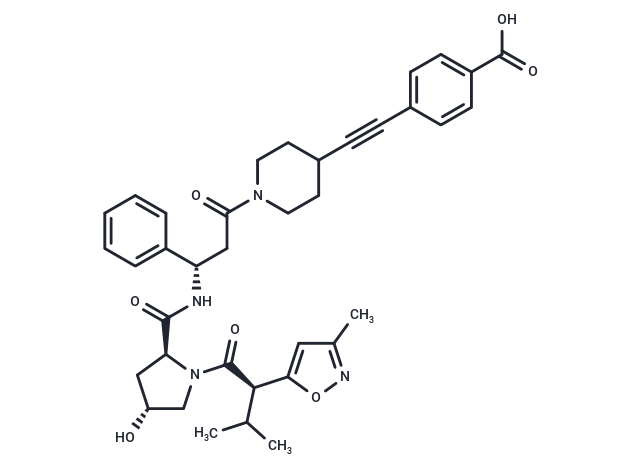Shopping Cart
- Remove All
 Your shopping cart is currently empty
Your shopping cart is currently empty

VHL Ligand-Linker Conjugates 17 are chemical compounds that consist of a VHL ligand specialized for the E3 ubiquitin ligase, as well as a PROTAC linker. These conjugates are utilized in the synthesis of various PROTACs, including the notable ARD-266. ARD-266 is an exceptionally effective androgen receptor (AR) PROTAC degrader[1].

| Pack Size | Price | Availability | Quantity |
|---|---|---|---|
| 100 mg | Inquiry | Backorder | |
| 500 mg | Inquiry | Backorder |
| Description | VHL Ligand-Linker Conjugates 17 are chemical compounds that consist of a VHL ligand specialized for the E3 ubiquitin ligase, as well as a PROTAC linker. These conjugates are utilized in the synthesis of various PROTACs, including the notable ARD-266. ARD-266 is an exceptionally effective androgen receptor (AR) PROTAC degrader[1]. |
| Molecular Weight | 654.75 |
| Formula | C37H42N4O7 |
| Relative Density. | no data available |
| Storage | Powder: -20°C for 3 years | In solvent: -80°C for 1 year | Shipping with blue ice. |

Copyright © 2015-2025 TargetMol Chemicals Inc. All Rights Reserved.